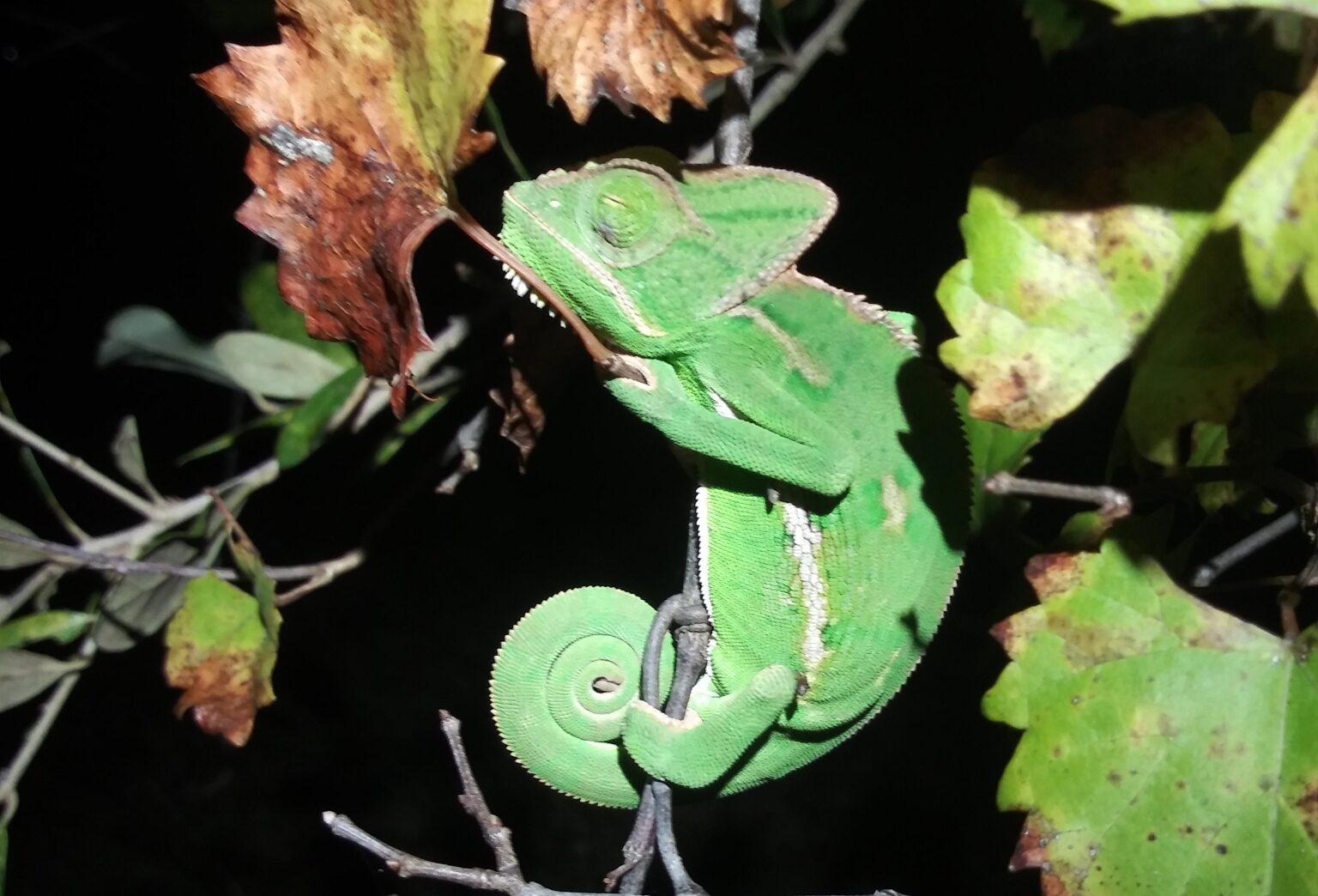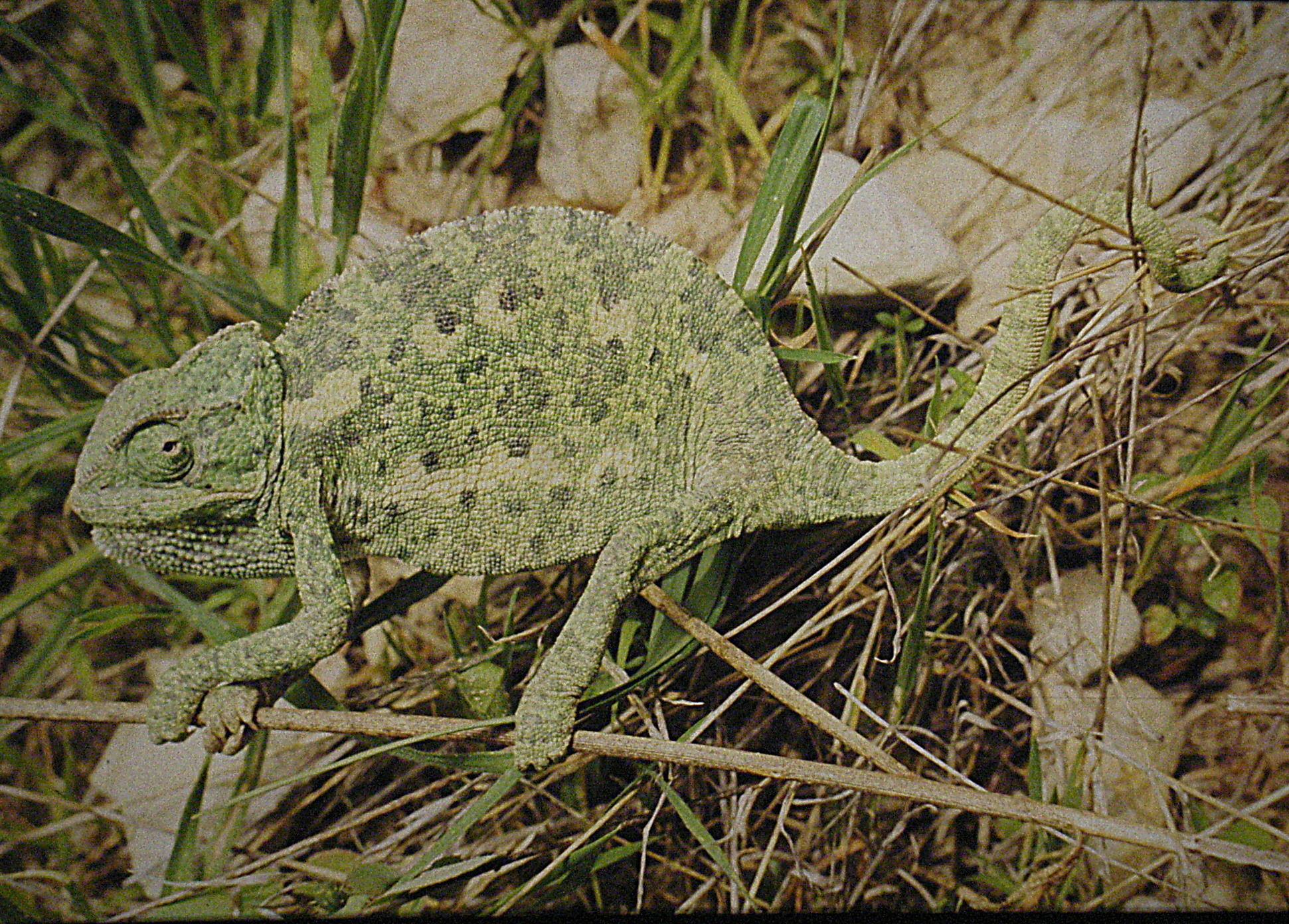Scientists have been investigating how chameleons’ tongues can shoot out of their mouths to such an extreme length for as long as anyone can remember. US biologists have now been able to solve another piece of the chameleon tongue puzzle.
In the study, experiments were carried out on 15 Veiled chameleons (Chamaeleo calyptratus). All 15 animals were first anaesthetised using overdosed gas anaesthesia and then killed by decapitation. The four tongue muscles were then dissected out and clamped in measuring devices. The muscles were stimulated with an electric current and the passive/active forces and various muscle lengths were measured. A series of calculations were then carried out and muscles were examined histologically. In addition, embryos previously obtained from eggs were analysed immunohistochemically to determine whether the tongue muscles develop from the same or two different muscle systems.
The results of the study are very interesting and focus primarily on the so-called sarcomeres of the muscles. A sarcomere is the smallest contractile unit of the muscle – i.e. the part that is responsible for the expansion and contraction of the muscles. At both ends of each sarcomere are the so-called intermediate discs (German “Zwischenscheibe”), abbreviated as Z-discs. Transverse striated muscles, i.e. the muscles that move the arms, legs and trunk of a vertebrate, can shorten to about half their resting length. In chameleons, however, there is a very special type of muscle, the so-called supercontracting muscle. By definition, this is a striated muscle that is able to shorten to less than half its resting length. The rectractor of the tongue, the hyoglossus muscle, is just such a muscle. In this muscle, perforated Z-discs on the sarcomeres ensure that it can stretch far better than normal striated muscles.
In the present study, it was found that a second supercontracting muscle is involved in the tongue shot: the sternohyoid superficialis muscle. In its counterpart, the sternohyoid profundus muscle, surprisingly, no perforated Z-discs could be detected at the sarcomeres. However, its length-tension ratio corresponded to the two supercontracting tongue muscles. This could be compensated for by the very broad attachment of the muscle to the hyoid bone. During tongue shooting, these areas of the hyoid bone are rapidly rotated, which could mechanically alter the sarcomeres.
Using immunohistochemistry, the biologists were also able to show in chameleon embryos that the two muscles develop from different origins, which is consistent with the different sarcomeres. Both the hyoglossus muscle and the sternohyoid muscles form a muscular unit, with one of the muscles even extending to the sternum. This means that the maximum length of the chameleon tongue when shooting is not only made possible by the special properties of the tongue muscles, but also by the overall length of the muscular unit. No other vertebrate in the world has ever been found to have two supercontracting muscles.
Feats of supercontractile strength: functional convergence of supercontracting muscle properties among hyoid musculature in chameleons
Nikole G. Schneider, Nicholas A. Henchal, Raul E. Diaz Jr., Christopher V. Anderson
Proceedings B of Royal Society Publishing, 2025
DOI: 10.1098/rspb.2025.0078
Figure: Schematic representation of the tongue muscles and hyoid bone in the Veiled chameleon from the aforementioned publication










